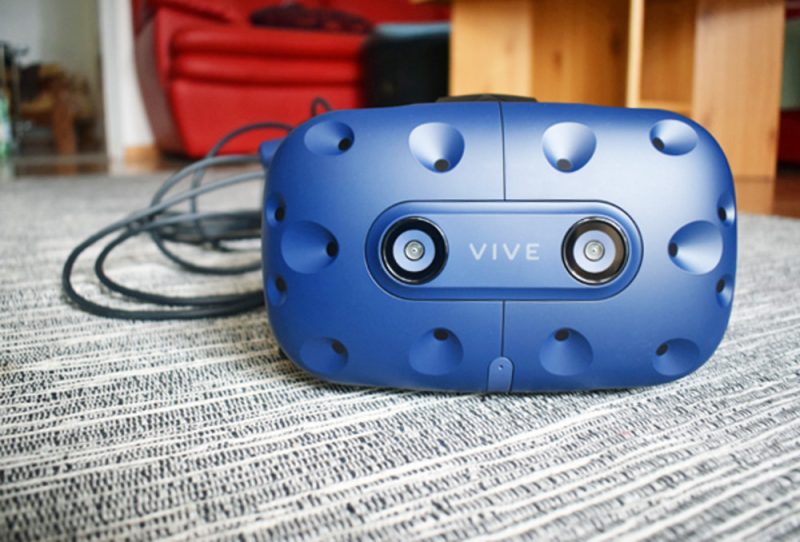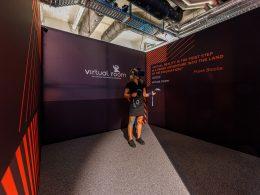The HTC Vive Pro has been available for a good two weeks. It now offers a total resolution of 2880 × 1600 pixels on two OLED panels, or 1440 × 1600 pixels per eye. This is almost 80 per cent more pixels than the first HTC Vive. The higher pixel density is primarily intended to counteract the typical VR grid effect. For comparison: the predecessor and the Oculus Rift previously only had 1080 × 1200 pixels per eye. The catch: if you order the Vive Pro, you only get the bare headset. Controllers and sensors, i.e. the two Lighthouse Base Stations, are not included in the package. Improved tracking sensors are not due to be released until the end of the year, which will then be able to cover ten square metres instead of the current maximum of five square metres. Hardcore VR gamers will have to weigh up very carefully whether the higher resolution is worth more to an upgrader than a last-minute trip to the Caribbean for seven days. The current edition is clearly designed more for developers and VR arcade operators. However, the sharpening is a pleasure. But one thing at a time.
Left in the picture: the new HTC Vive Pro
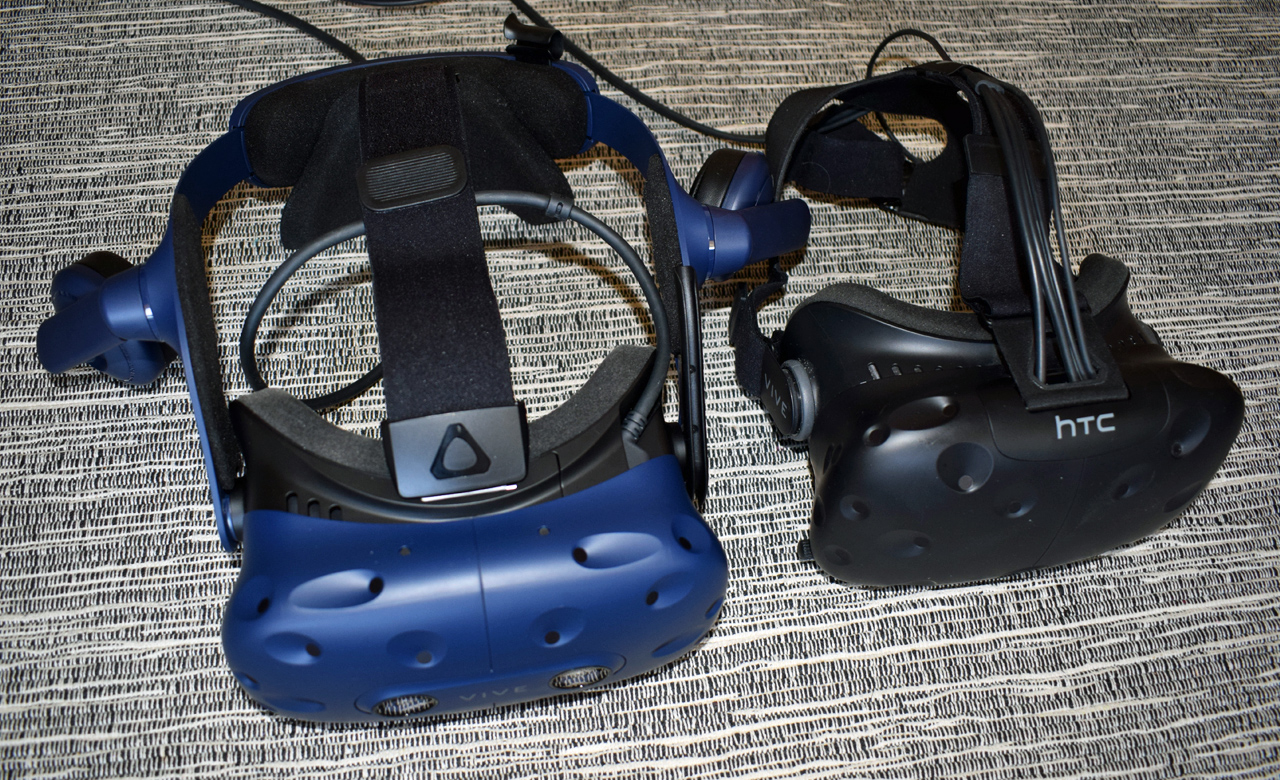
Versatile adjustability
The scope of delivery is quickly explained: apart from a few stickers and a large poster with the link to download the software, nothing else is included in the box other than the Vive Pro and the new connection box. We are particularly impressed by the versatile adjustability of the upgrade glasses. Similar to the PlayStation VR, the head position can now be fixed thanks to the padded strap and an adjusting screw. The front part of the head-mounted display (HMD), in which the lenses are located, can be extended by four to five centimetres using a button on the underside so that the VR displays and lenses do not come into contact with each other. This makes it even easier to find a good "sweet spot". The padded headband on the back, which can even be folded upwards to make it easier to escape the virtual worlds, is also very pleasing. If you initially thought the Vive Pro was lighter than its predecessor, you realise the better balance of the approx. 550 gram VR load when wearing it, as both Vives are actually roughly the same weight.
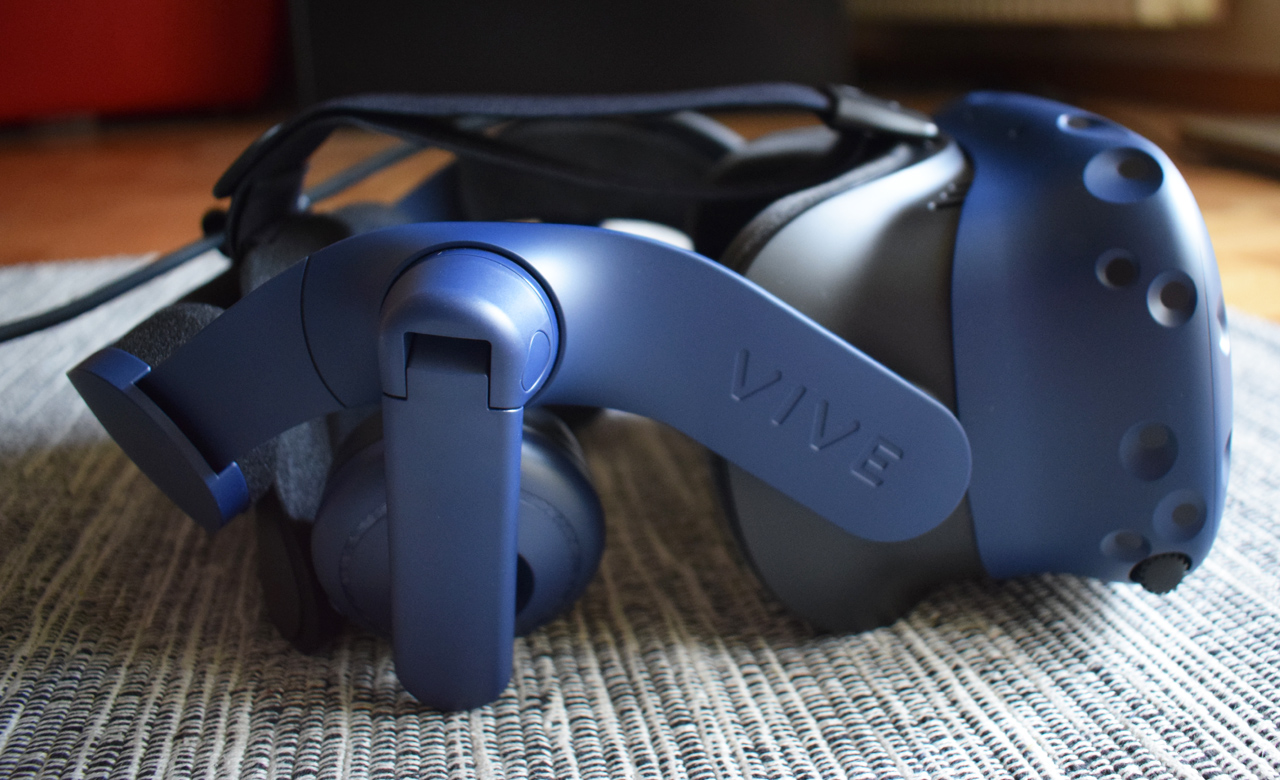
No fun without bass
The fold-out stereo headphones, which are now attached directly to the shoulder strap like the Oculus Rift, are evidence of good noise-cancelling quality. Apart from the somewhat cheap plastic of the ear pads, I wasn't very impressed by the bass penetration. If you're used to better mid-range sound like the on-ear VR sound solution of the Turtle Beach 350VR for less than 200 francs, you don't want to take on the legacy of the new HTC dowry. There are better audio accessories for less than 200 francs, such as Sony's PS4 Wireless Platinum headset, which surrounds the ears with a much denser sound carpet in terms of depth. You can also remove the fold-out Vive headphones using two internal Torx screws. However, a wireless sound solution is then mandatory.
We also know it from the PlayStation VR: the rear adjusting screw
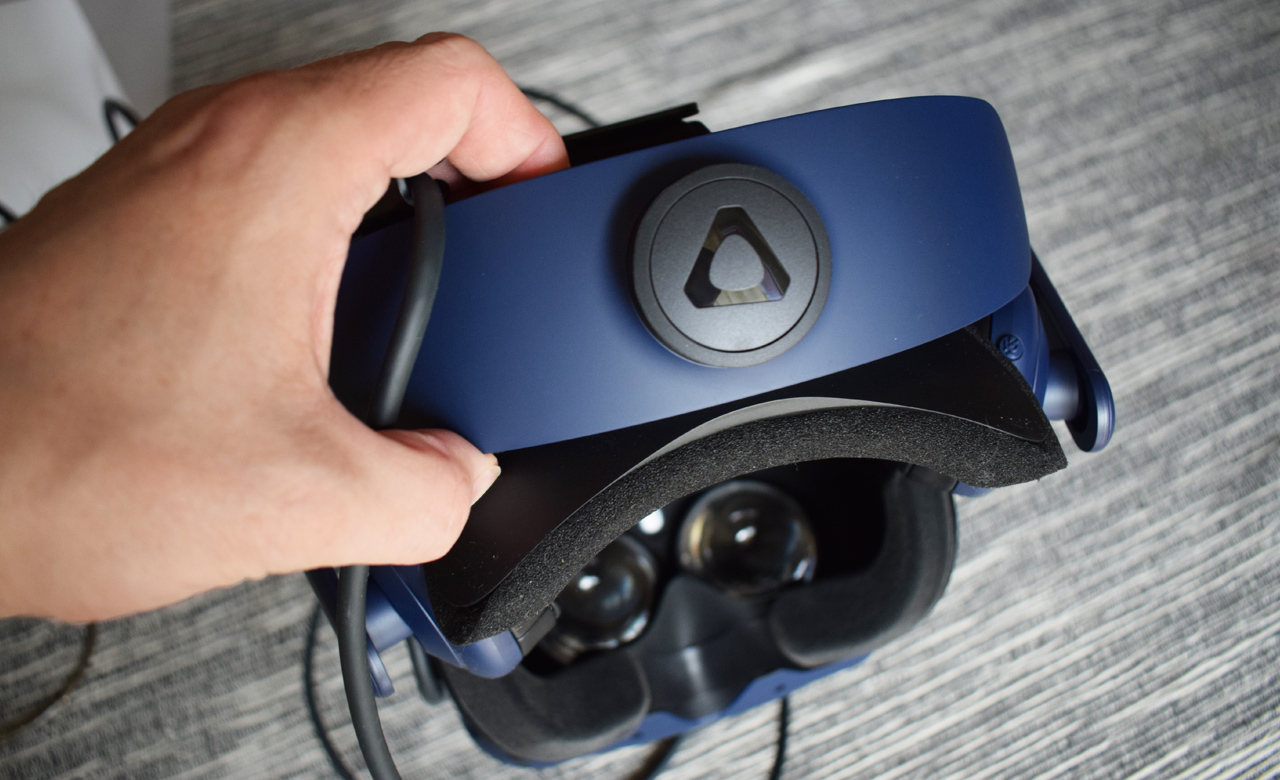
No more handle
But why the manufacturer is already rationalising away the jack connection makes me shake my head. A step towards "wireless VR" is inevitable and also welcome. But as long as the VR travelling companions are still heavy and clunky on the head, a connection is more or less irrelevant from my perspective at the moment. Sorry, the manufacturers of Windows mixed reality glasses and Sony also offer almost inconspicuous solutions for the old jack, whether via the volume control or directly via the front part of the headset, as is the case with HP, for example.
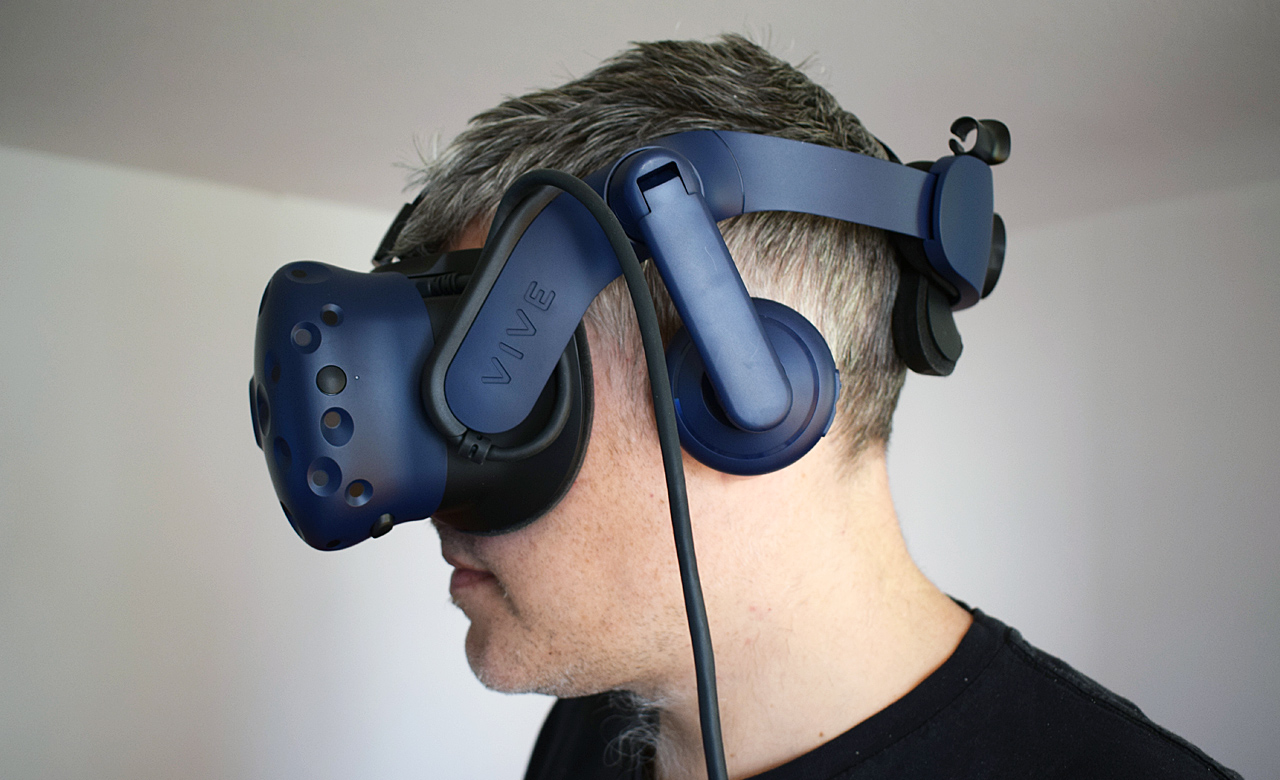
Commissioning
Anyone installing an HTC Vive for the first time will need a little patience. It may be that everything runs smoothly straight away. However, it is also possible that the driver software or a USB port on the motherboard is causing recognition errors. In this case, keep calm, restart the PC or try a different connection socket. If you are already using an HTC Vive, installation is very simple. SteamVR finds the glasses automatically and updates the driver in just a few seconds. You don't even have to retrace the virtual space boundaries. Important: Due to the higher resolution, the new HTC Vive Pro is no longer connected via HDMI, but via DisplayPort. So it's good if the graphics card has more than just a DisplayPort connection for the 4K monitor. Thumbs up: The new connector between the Vive Pro and PC now has a power button so that the glasses can also be switched off in standby mode.
Right: the new connector of the HTC Vive Pro
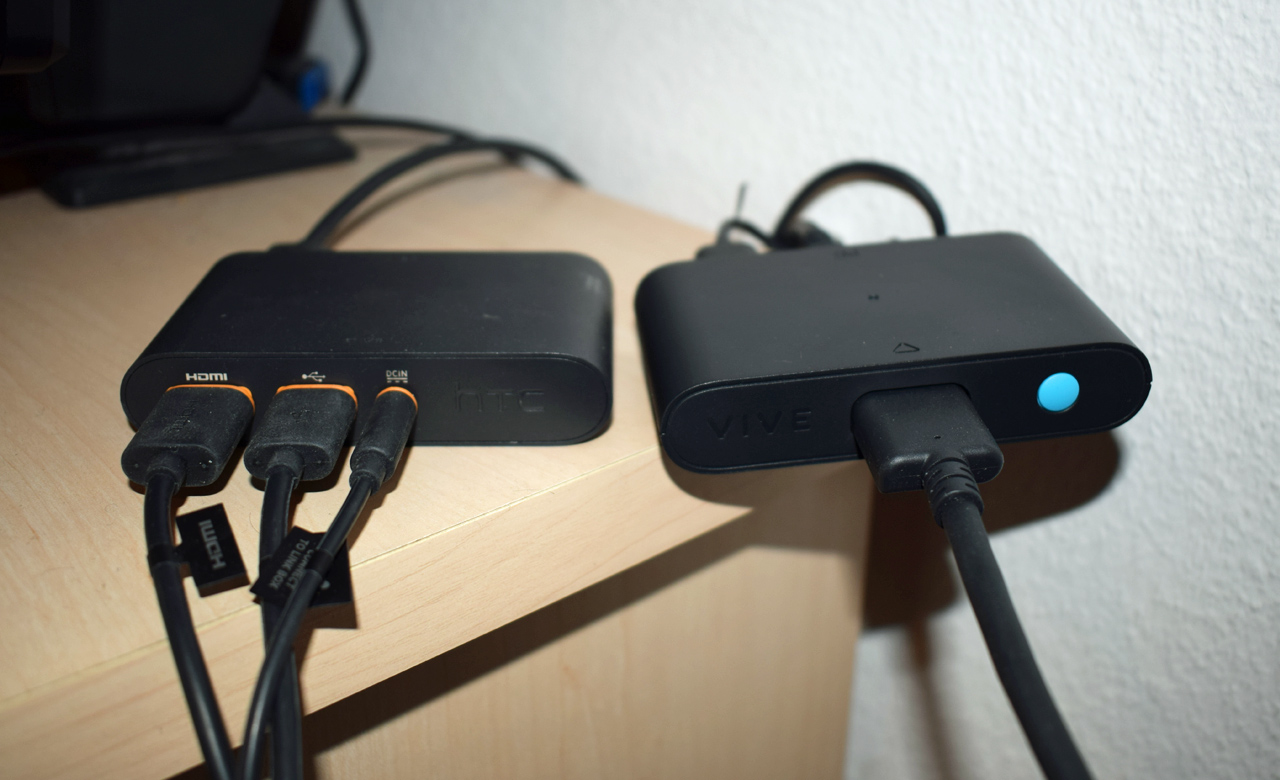
Fewer cables
Also good: while the standard Vive still had three signal cables protruding from the HMD, there are now only a Glasses cable with a proprietary connector plug. It is true that HTC had already left the three signal cables in a compact triple strand in the predecessor. But if the bundle wasn't "unravelled" here and there, there was a risk of VR nosedives. We will have to wait a few more months before a new compatible wireless solution such as TPCast is available. Intel already announced at the IDF 2014 in San Francisco that the WiGig wireless signal standard would soon make all signal cables on PCs obsolete in the course of new processors. This was probably meant a little too euphorically at the time, but will certainly be possible at some point in the PC sector with higher frequency technology. Things are getting exciting now, however, because HTC is working on a WiGig-based solution together with Intel as part of a co-operation specifically for VR, as it really makes sense to finally develop a good wireless system for virtual reality. The accessories will be added later this year.
The HTC Vive Pro only has one cable that you can trip over.
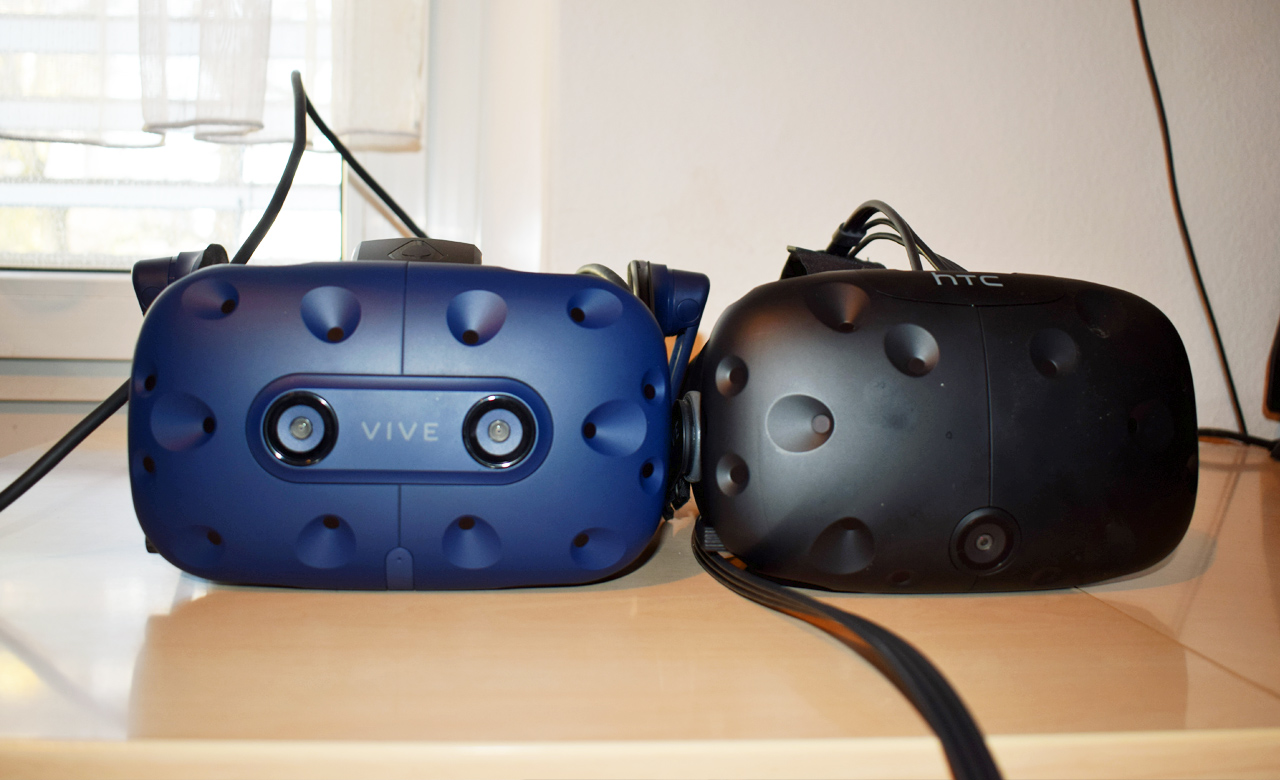
More sharpness from near and far
Sharper fonts and objects are clearly recognisable, especially at close and medium distances. Even in my favourite stupid shooter "Serious Sam: The Last Hope", the enemies and the green smoke bombs were suddenly much clearer. In the airless drone shooter "Space Pirate Trainer", I couldn't immediately tell the difference to the Windows mixed reality glasses, because the LCD-based Windows VR headsets already offer a higher resolution than the first HTC Vive and Oculus Rift. A few more pixels won't cause a "poah" effect, even on an OLED basis. Therefore: it depends, what you play! Fast and graphically less complex titles such as "Audioshield" or older SteamVR mini-games will not catapult you into a completely new graphical dimension.
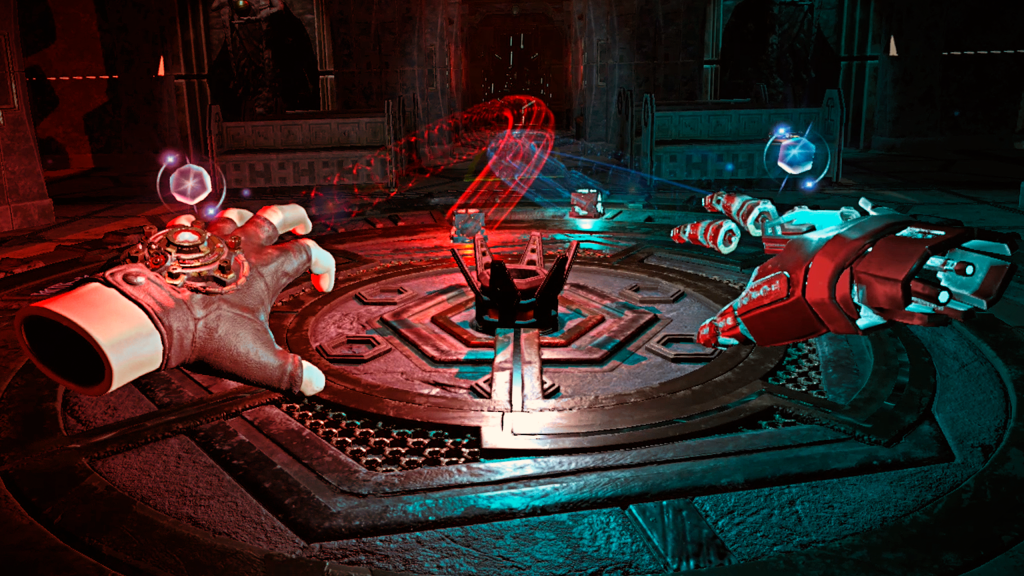
All in all, however, the Vive Pro is clearly superior to the first Vive. In terms of graphics performance, even an older GeForce GTX 980 Ti was initially able to handle most games without any problems in the standard settings. However, if you want to benefit from the developers' new 4K textures in the puzzle adventure game "Heart of The Emberstone", for example, even older Nvidia cards from the 9-series are already jerky. Nvidia itself recommends At least a GeForce GTX 1070, including a fast quad-core Core i7 or i5 processor. However, the individual pixels and the light shimmer caused by the Fresnel lens grind are still recognisable.
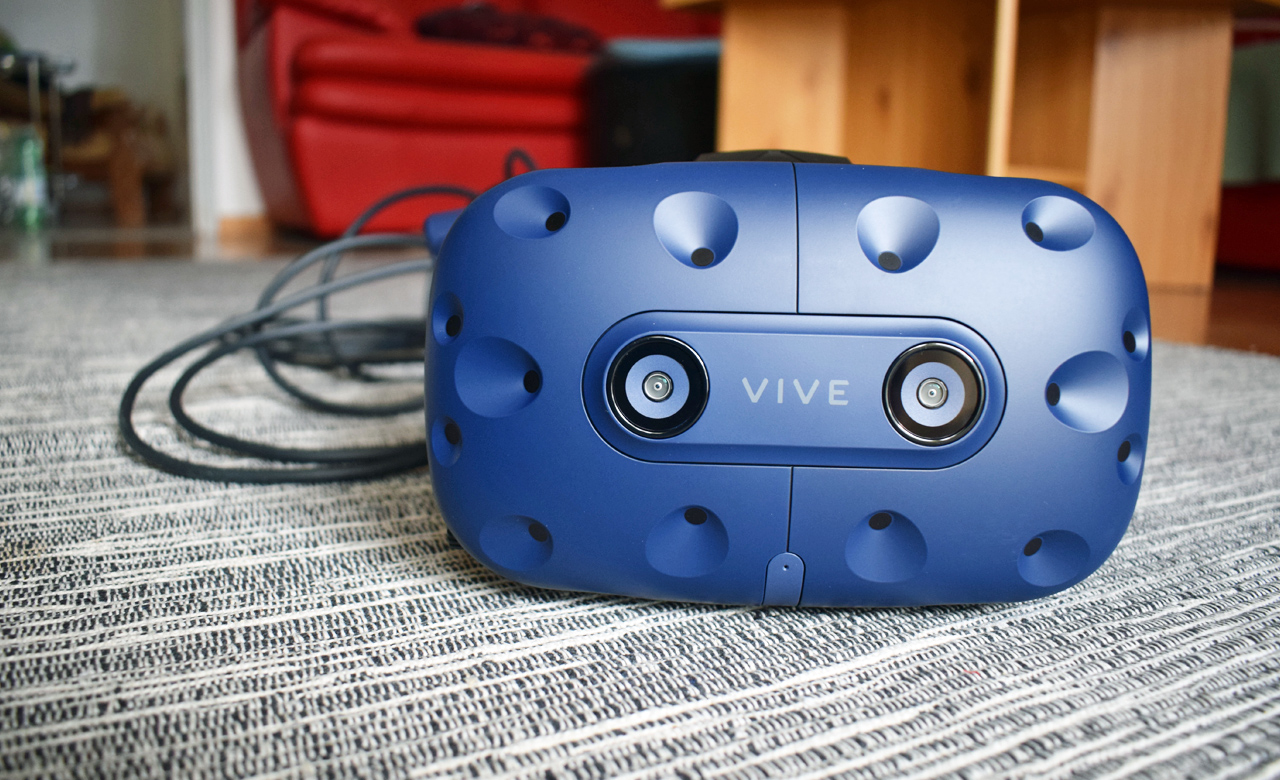
What is still to come
Really exciting: unlike the current HTC Vive, the HTC Vive Pro not only has a camera, but two lenses on the front. The Vive SRWorks SDK, which has only been released a few days ago, not only provides programmers with image information, but also access to depth information, for example to place objects in the foreground and background, as well as the option to interact with virtual objects via hand tracking. This turns the HTC Vive Pro into augmented reality glasses. What's in it for gamers? Probably no ultimate killer apps yet, but we will probably see some cool projects by the end of the year.
Valve has also been working on an Oculus Touch counterpart since 2016. The "Valve Knuckles" are a gesture controller that is attached to the back of the hand and whose control elements (trackpad, buttons) are located on the inside of the hand. Thanks to the precise Vive tracking, all finger movements can be captured. The first kits have been with developers since around autumn 2017. As with the SteamVR 2.0 tracking stations, it is still somewhat uncertain when the Vive touch controllers will come onto the market. One can guess (or hope) that this will perhaps be the case at the end of the year.
The improved SteamVR 2.0 tracking of the next-generation Vive laser stations is also not expected to be ready for the market until the end of the year. So perhaps the contract for the new VR loft flat can wait a little longer. All joking aside. The new Lighthouse Base Stations will (hopefully) also be less prone to errors thanks to revised rotary motors. After all, if you were unlucky, you might have experienced a DOA (Dead on Arrival) with the first generation. The new tracking stations will definitely be supported by the Pro-Vive, but presumably not by its predecessor.
The test device was kindly made available to me by Digitec.ch. Here you can order the HTC Vive Pro.





